ECO-CICLE Good Practices - Connecting Spaces through Cycle Networks
The ECO-CICLE project, running from June 2018 to June 2022, is an Interreg Europe project, the specific objective of which is to improve the implementation of regional development policies regarding the protection and development of natural and cultural heritage. One of the key deliverables of this project is the selection and dissemination of 12 good practices, meaning successful initiatives (e.g. methodologies, projects, processes or techniques) carried out under one of the Interreg Europe Programme’s topics – in this case, the ‘Environment & Resource Efficiency’. All good practices should have already been implemented and proven successful, with a potential to inspire other regions to implement cycle tourism in natural areas.
Good practices selected in the frame of the ECO-CICLE project highlight great achievements in cycle tourism across Europe, belonging to 7 fundamental categories: infrastructure, advanced services, cycle tourism in natural areas, promotion, financing, planning & management and intermodality. These categories reflect the main aspects of the development of successful cycle touring routes. While most of them are crucial both inside and outside urban centres, the category ‘cycle tourism in natural areas’, directly linked to the ECO-CICLE project’s thematic, highlights the importance of the possibility to experience nature when choosing a cycling holiday’s destination – as mentioned in the ADFC’s Bicycle Travel Analysis 2019.
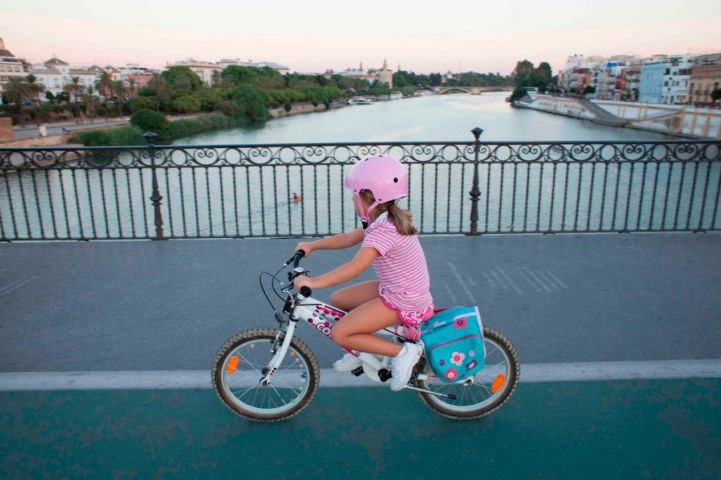
In this first article on the ECO-CICLE project’s good practices, read about 4 regional initiatives from Spain, Croatia and Poland. Despite their diverse geographical origins and types of invention, these good practices have the similar objective to develop cycle networks bringing economic benefits to local communities, connecting natural areas (including sites of the Natura 2000 network) and encouraging intermodality.
Cycling Plan of Andalusia
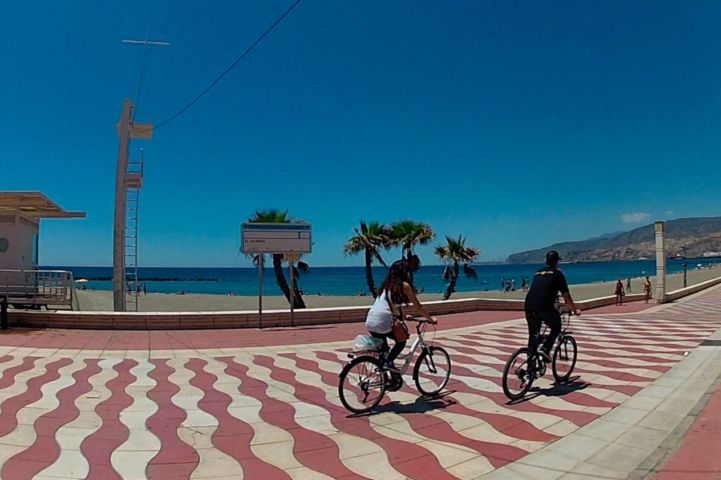
The first good practice we are presenting in this article comes from Seville in Andalusia. The region’s Cycling Plan seeks to promote cycling as a means of transportation, leisure and tourism and to provide the strategic framework that contributes to the achievement of the territorial and environmental governmental objectives. The Cycling Plan also proposes measures to promote intermodality, bike services, dissemination and awareness, and public bicycles (bike sharing). It is based on the success of the introduction of cycling in Seville and aims to spread the best of this experience throughout the region.
Concretely, the plan includes the construction of a long-distance cycle network, the ‘Cycle Path Network of Andalusia’, for a total of 3,080 km of cycle routes. This will contribute to socio-economic development and to the reduction of unemployment levels, also in rural areas. An additional objective of the Cycling Plan of Andalusia is to reduce pollutant emissions and noise and potentially improve the personal health of the region’s inhabitants. Framework agreements have been signed with most of the cities included in the Cycling Plan of Andalusia and this collaboration between municipalities has good potential to inspire other regions.
This good practice belongs to the ‘planning & management’ category, which highlights the importance of considering many aspects when developing an itinerary, such as the economic impact of the route, the availability of services, existing infrastructure the costs for building cycle paths, cultural and natural attractions, etc. Find out more at aopandalucia.es/planandaluzdelabicicleta.
Development of cycle routes through ITI Cádiz
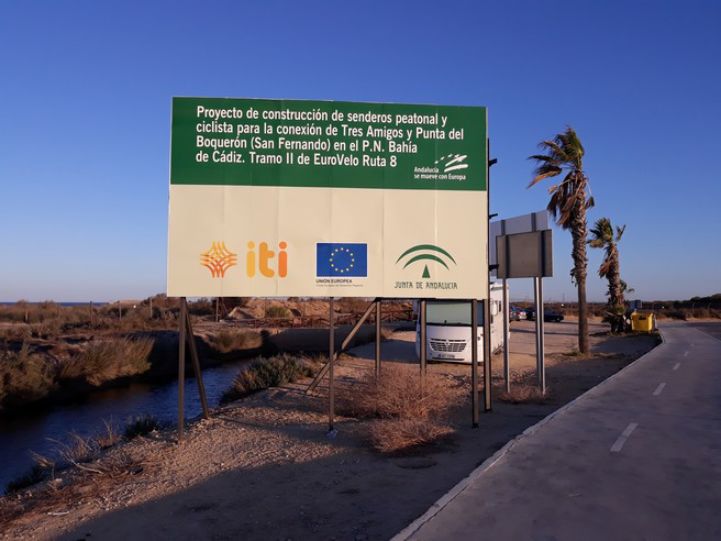
This good practice from Cádiz, also in Andalusia, concerns the Integrated Territorial Initiative (ITI) for the creation of cycling routes that interconnect the province’s natural spaces. The development of this cycle network helps promoting cycle tourism in protected areas and is supported by a specific source of funding from the European Regional Development Fund, called Integrated Territorial Investment (ITI Cádiz). The specificity of this funding source is that it allows for different combinations of European Structural and Investment Funds, depending on the concrete territorial issues.
In this case, the most important route that is being developed corresponds to EuroVelo 8 – Mediterranean Route, following the coast between the Cádiz Bay ad the Algeciras Bay. The route crosses the Bahía de Cádiz, La Breña y Marismas del Barbate and Los Alcornocales Natural Parks, creating a diversified touristic offer that complements the traditional sun and beach options. In this way, ITI Cadiz contributes to the development of local communities and economy. On the social side, this initiative also links cycling to other outdoor activities such as birdwatching, hiking and nature photography.
This good practice belongs to the ‘financing’ category as it shows how to successfully access structural-fund investments through operational programmes – which is crucial for the development of adequate cycling infrastructure. Find out more at informacioniti.es.
Krka Bike in Šibenik
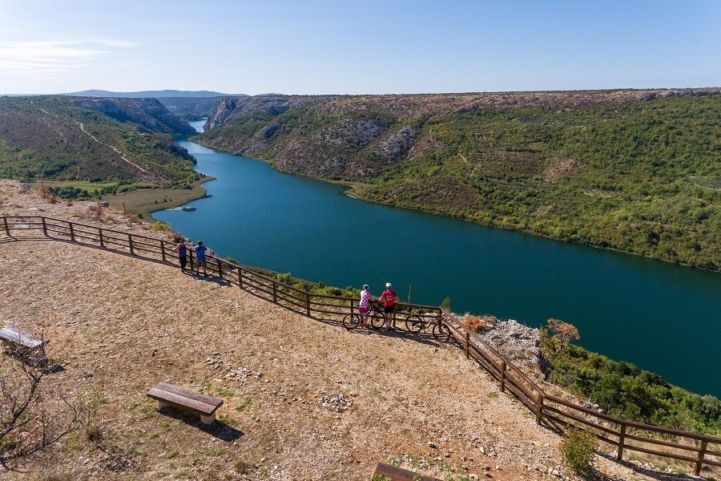
We move now to Croatia’s Central Dalmatia, where Krka National Park can be found a few kilometres northeast of the city of Šibenik. The park covers an area of 109 km² along the middle-lower course of the Krka River and includes many unaltered areas of exceptional natural value. The purpose of the park is primarily to serve science, culture, education and recreation, while tourism activities have also been introduced for its visitors.
The ‘Krka Bike’ good practice refers to the development of a 470-km network of cycle routes through Krka National Park, including signing and a marketing campaign. Routes were designed to be circular to allow user to return to their starting point, while generally avoiding overlaps. Through this offer, the Krka Bike project extends the stays of visitors for a few days, which contributes to the sustainable development of the area. On the environmental side, care is taken to ensure that protected areas and endangered species’ habitats are avoided by the cycle routes.
This good practice belongs to the ‘cycle tourism in natural areas’ category as it gives a concrete example of sustainable cycle tourism development, taking natural areas’ protection into consideration. Developing this type of cycle tourism has great economic and social advantages, as information boards can also inform cyclists on the surrounding area, plants and animals. Find out more at bike.too.hr.
Vistula Cycling Route
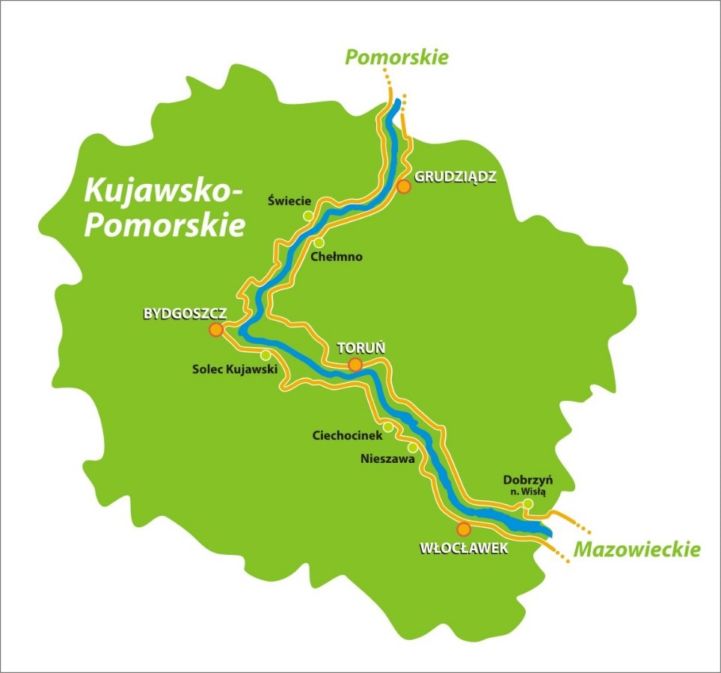
The final good practice for this article is the Vistula Cycling Route in Poland’s Kujawsko-Pomorskie Region, which runs along the banks of the Vistula River – the largest and longest river in the country. Cycle paths marked out at different times are being transformed to create a more organised cycle network connecting to form the Vistula Cycling Route which is becoming the most important axis for cycling tourism in the region.
Since the route runs close to several railway stations, it is ideal both for the region’s inhabitants and for visitors wishing to explore the landscapes and historical monuments of Central Poland. The essence of the practice is to connect cycling and public transport and to promote cycling as a sustainable mode of transport and tourism, which might be a real opportunity for the area’s economic revival.
This good practice belongs to the ‘cycle tourism in natural areas’ category as it focuses on the development of a cycle route crossing regions that are part of the Natura 2000 European network of protected areas, namely the eastern part of the Thorn Eberswalde Glacial Valley and the southern part of the Lower Vistula River Valley, constituting an ecological corridor that connects the Baltic Sea with the Carpathian Mountains. Find out more at kujawsko-pomorskie.pl.
Next month we will highlight a second part of the good practices selected in the frame of the ECO-CICLE project, focusing on protected areas’ care and recovery and the enhancement of heritage along the tracks. Find out more about ECO-CICLE on the project’s website.
Author(s): Florence Grégoire